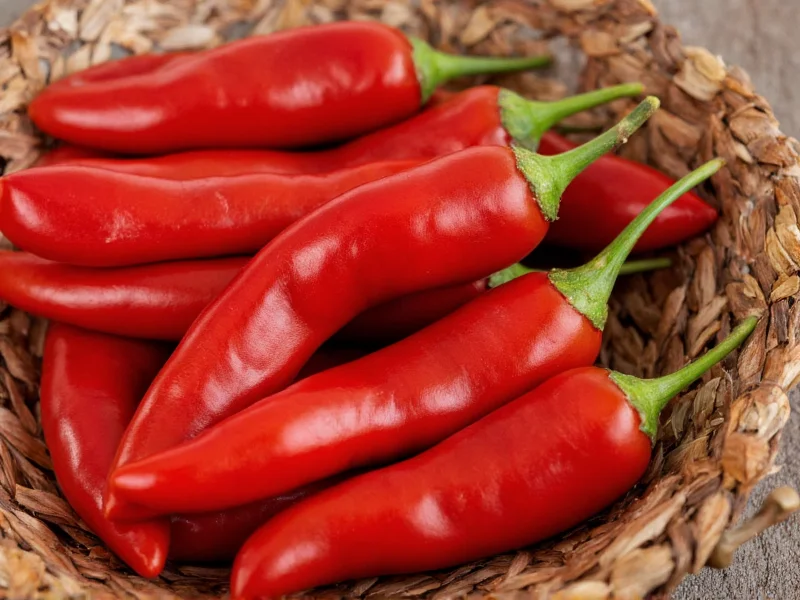When your recipe calls for Aleppo chili but your spice cabinet falls short, knowing the right substitute can make or break your dish. This distinctive Middle Eastern pepper, also known as Halaby pepper, delivers a complex flavor profile that's essential in dishes like muhammara, fattoush, and various kebab marinades. Understanding what makes Aleppo pepper unique—its moderate heat level (about 10,000 Scoville units), subtle fruitiness, and slight saltiness—helps identify the most effective alternatives when you're searching for an aleppo pepper alternative for middle eastern cooking.
Understanding Aleppo Chili's Unique Profile
Aleppo chili originates from Syria and Turkey, where it's traditionally dried, coarsely ground, and preserved in olive oil with a touch of salt. Unlike many chili powders, it offers more than just heat—it provides a nuanced flavor with berry-like undertones and a gentle warmth that builds gradually. When seeking what to use instead of aleppo chili, consider both the heat level and flavor complexity you need to maintain in your recipe.
Top 5 Aleppo Chili Substitutes Ranked by Effectiveness
| Substitute | Ratio | Heat Level | Best For | Limitations |
|---|---|---|---|---|
| Maras pepper | 1:1 | 10,000 SHU | All applications | Limited availability |
| Crushed red pepper + sweet paprika | 1:2 | Variable | Dry rubs, sauces | Lacks fruitiness |
| Ancho chili powder + olive oil | 1 tsp + 1/2 tsp | 1,000-2,000 SHU | Moist dishes | Milder heat |
| Cayenne + sweet paprika + salt | 1:3:pinch | 30,000-50,000 SHU | Spicy applications | Higher heat |
| Pimentón de la Vera (sweet) | 1:1 | 100-500 SHU | Color-focused dishes | Very mild heat |
Detailed Substitute Analysis
Maras Pepper: The Closest Match
Often called the "Turkish Aleppo," Maras pepper comes from the Kahramanmaraş region of Turkey and offers nearly identical flavor and heat. When looking for the best substitute for aleppo pepper in recipes, this is your top choice if available. It has the same brick-red color, moderate heat, and subtle fruitiness. Use it in a 1:1 ratio for any application calling for Aleppo pepper.
Crushed Red Pepper and Sweet Paprika Blend
This kitchen staple combination works well as an aleppo pepper alternative middle eastern cooking when Maras pepper isn't available. Combine one part crushed red pepper flakes with two parts sweet paprika. For every teaspoon of Aleppo pepper required, use this blend plus a small pinch of salt to replicate the traditional salted preservation method. This substitution works particularly well in dry rubs and spice blends where texture matters.
Ancho Chili Powder with Olive Oil
Ancho, made from dried poblanos, offers a similar fruitiness though milder heat. For recipes requiring moisture (like sauces or dips), mix one teaspoon ancho powder with half a teaspoon of olive oil. This mimics Aleppo's traditional oil-preserved form. While not as hot as authentic Aleppo (2,000 vs 10,000 SHU), this substitute maintains the earthy, raisin-like notes essential in dishes like muhammara.
Cayenne and Sweet Paprika Combination
For those needing a mild chili substitute for aleppo pepper with more heat control, combine cayenne and sweet paprika in a 1:3 ratio with a pinch of salt. Start with half the recommended amount, then adjust to taste. This works well when you need the vibrant red color and moderate heat but don't have access to specialty peppers. Remember that cayenne is significantly hotter, so err on the side of caution.
Pimentón de la Vera (Sweet)
Spanish smoked paprika provides excellent color and some complexity, though it lacks heat. Use sweet pimentón in a 1:1 ratio when color matters more than heat, such as in tomato-based sauces or roasted vegetable dishes. For a closer approximation, add a tiny pinch of cayenne to introduce mild heat without overwhelming the dish.
Regional Availability Considerations
Finding authentic Aleppo pepper has become challenging due to geopolitical issues affecting Syrian production. In North America, specialty food stores and online retailers remain your best bet for genuine product. When exploring where to buy aleppo pepper substitutes, check Middle Eastern markets for Maras pepper or Turkish pepper flakes, which often carry the closest alternatives. Many grocery chains now stock Aleppo-style blends in their international sections, though these frequently contain additional ingredients like salt and oil.
Recipe Adjustment Guidelines
When substituting in recipes, consider these professional tips:
- For dry applications (spice rubs, dry marinades): Use the crushed red pepper/paprika blend
- For wet applications (sauces, dips): Opt for ancho powder with olive oil
- When color is critical: Pimentón de la Vera provides excellent hue
- For traditional Syrian/Turkish dishes: Seek Maras pepper for authenticity
- Always add salt separately when using unsalted substitutes
Storage Tips for Substitutes
Unlike authentic Aleppo pepper preserved in olive oil, most substitutes require different storage approaches. Keep paprika-based blends in airtight containers away from light and heat. For longer shelf life, store in the refrigerator—especially if you've added olive oil to your substitute mixture. Properly stored, most alternatives maintain quality for 6-12 months, though they gradually lose potency. Always check for faded color or diminished aroma, which indicate diminished quality.











 浙公网安备
33010002000092号
浙公网安备
33010002000092号 浙B2-20120091-4
浙B2-20120091-4